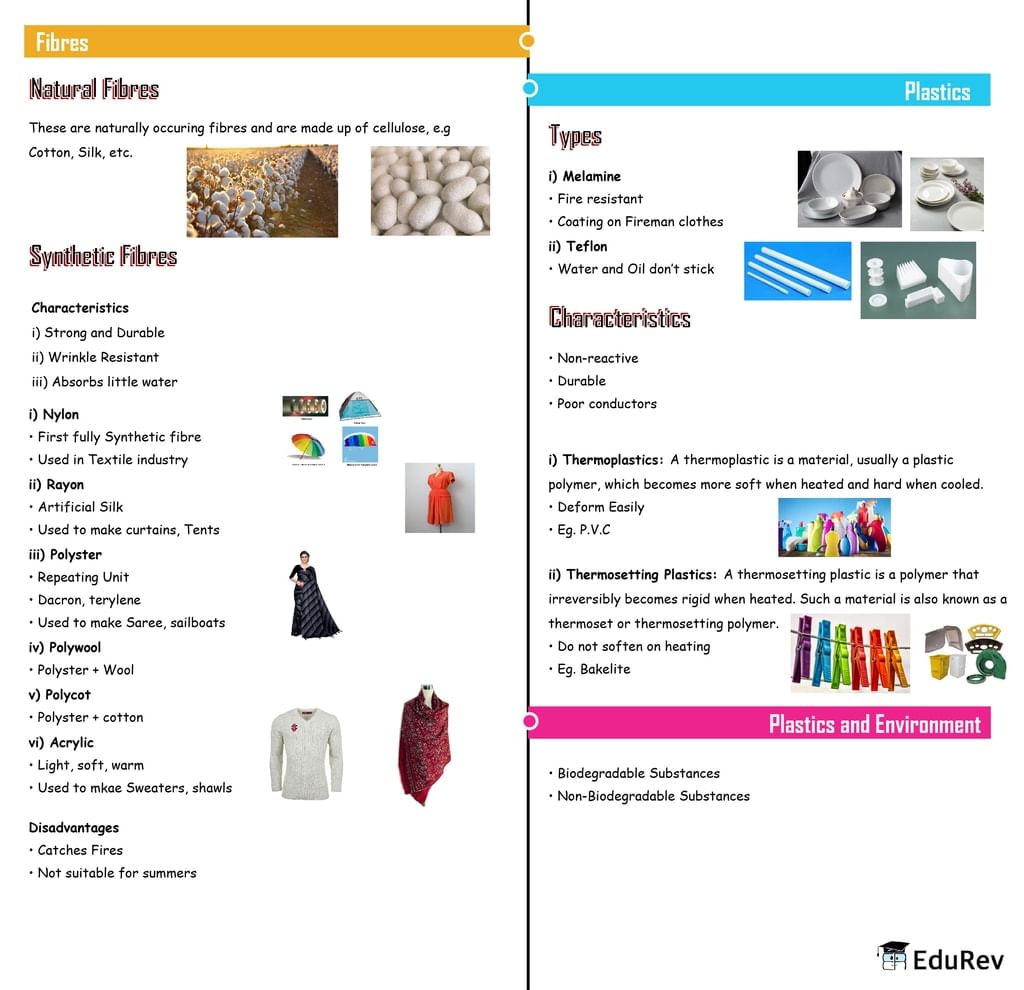UPSC Exam > UPSC Notes > Class 6 to 12 NCERT Mindmaps for UPSC Preparation > Mind Map: Synthetic Fibres and Plastics
Mind Map: Synthetic Fibres and Plastics | Class 6 to 12 NCERT Mindmaps for UPSC Preparation PDF Download

The document Mind Map: Synthetic Fibres and Plastics | Class 6 to 12 NCERT Mindmaps for UPSC Preparation is a part of the UPSC Course Class 6 to 12 NCERT Mindmaps for UPSC Preparation.
All you need of UPSC at this link: UPSC
FAQs on Mind Map: Synthetic Fibres and Plastics - Class 6 to 12 NCERT Mindmaps for UPSC Preparation
| 1. What are synthetic fibres? |  |
Ans. Synthetic fibres are man-made fibres that are produced by chemical processes. They are created by converting natural materials or petrochemicals into various forms of polymers. These polymers are then spun into fibres to create synthetic fabrics.
| 2. What are the advantages of using synthetic fibres? |  |
Ans. Synthetic fibres have several advantages. They are durable and long-lasting, which makes them suitable for everyday use. They are also resistant to wrinkles and shrinkage, making them low-maintenance. Additionally, synthetic fibres are often more affordable than natural fibres and are available in a wide range of colors and textures.
| 3. Are synthetic fibres environmentally friendly? |  |
Ans. Synthetic fibres are not considered environmentally friendly due to their production process and non-biodegradable nature. The manufacturing of synthetic fibres involves the use of chemicals and energy, which can have a negative impact on the environment. Furthermore, synthetic fibres do not decompose easily, leading to accumulation in landfills.
| 4. Can synthetic fibres be recycled? |  |
Ans. Yes, synthetic fibres can be recycled. Recycling processes for synthetic fibres involve breaking down the fibres into their original polymers, which can then be used to create new fibres or other products. However, the recycling of synthetic fibres is more complex compared to natural fibres, and not all types of synthetic fibres can be easily recycled.
| 5. What are some common uses of synthetic fibres? |  |
Ans. Synthetic fibres are widely used in various industries. They are commonly used in the production of clothing, such as polyester, nylon, and acrylic fabrics. Synthetic fibres are also used in the manufacturing of carpets, upholstery, ropes, and tents. Additionally, they are used in the production of industrial materials, such as filters, insulation, and packaging materials.
Related Searches
















